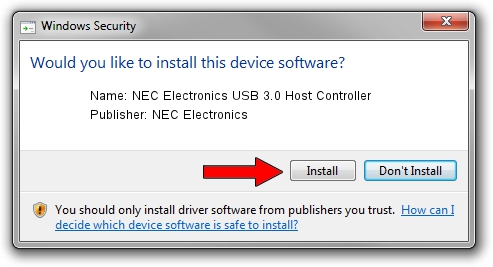Parallel port is an interface between computer and peripheral devices like printers with parallel communication. The Centronics port is a 36 pin port that was developed as an interface for printers and scanners and hence a parallel port is also called as a Centronics port. Before the wide use of USB ports, parallel ports are very common in. If ground loops become a problem you can use isolation circuits or device to break the loop. The Sealevel Systems SeaLINK® 2113, for example, provides a single-port RS-232, RS-422, or RS-485 serial interface that isolates the bus signals from a host PC. The PC connects to this module via a USB port.
CP2102 is a USB to UART IC from Silicon Labs. It is my favourite converter IC and I have been using USB to RS232 module and USB to TLL modules based on CP2102 for couple of years without any issues. CP2102 is a cheaper alternative to the costlier ftdi IC (ft232) but cp2102 is a bit difficult to solder as it comes in QFN-28 package and is very small (just 5mmx5mm) in size. The main advantage of CP2102 is that no extra external components are required.
CP2102 IC is used in lot of Arduino UNO Clones, arduino Nano, Node MUC and even in ESP32 Development boards. In this tutorial I will provide you with step by step process to install CP2102 USB Driver in windows.
You can download CP2102 driver from below
- CP2102 USB Driver for Windows XP, 7, 8, 8.1 & Windows 10
Check your computer's Device Manager (if using Windows) to make sure that the computer sees the device is plugged in. The name of the device will often be 'Unidentified USB device'. Go back to Zadig, click on the 'Options' menu, and make sure there is a check-mark next to 'List All Devices'. Virtual COM port (VCP) drivers cause the USB device to appear as an additional COM port available to the PC. Application software can access the USB device in the This page contains the VCP drivers currently available for FTDI devices. For D2XX Direct drivers, please click here. To verify that your driver is working, you should see a difference in the following pictures after plugging the CH340 to a USB port. To check that the CH340 enumerates to a COM port, you can open the device manager. You can click the Start or ⊞ (Windows) button and type 'device manager to quickly search for the application.
Drivers Noavaran Elec Port Devices Adapter
Step by Step Installation of CP2102 Drivers
Initially connect your hardware having CP2102 USB to Serial IC to your PC. In the device manager it will show “CP2102 USB to UART Bridge Controller” (as shown in below figure) which means that your PC has detected the drivers but please note the “!” sign which indicated cp2102 drivers have not been installed.
Now extract the “CP210x_Windows_Drivers” in a folder and in that you will find applications named “CP210xVCPInstaller_x64” & “CP210xVCPInstaller_x86”. If your system is 64 bit then run “CP210xVCPInstaller_x64.exe” application and if it is 32 bit then run “CP210xVCPInstaller_x86” application.
Once you run your application it will show you the welcome screen click “Next” on the screen. Then the license Agreement screen is shown select “I agree” and then on “Next”.
Drivers Noavaran Elec Port Devices Gigabit
Just relax now the CP2102 drivers will start installing…..and within few seconds completed screen will be displayed.
Drivers Noavaran Elec Port Devices Switch
Drivers Noavaran Elec Port Devices For Sale
Once installed it will show driver successfully installed. Now go again back to device manager and there you will see that the driver has been successfully been installed and a com port has been allotted. In below image you can see that “com4” has been allotted for cp2102 IC in my laptop.
Drivers for the CP2102 have now been installed successfully. I have tested this drivers and installation process in Windows XP, windows 7. Will test is soon on Windows 8 & windows 10.
You can see in above image that Port Number 4 has been allocated to this IC. If you want you can even change the virtual com port number from Device Manager.

For latest CP2102 drivers and for drivers for MAC, Linux and for Android OS please check this link.
Last Update: 10/24/2014
Transmitting USB TO HOST Products' Output Data to 5-Pin MIDI Devices
When attempting to send MIDI Data from a DTX / PSRE / PSRS / DGX or other electronic drum or keyboard product solely equipped with a USB TO HOST port to game systems, controllers or modules equipped with 5-Pin MIDI ports. The USB MIDI signal must first be routed thru the computer via MIDI Editing/Routing Software (such as a DAW - Digital Audio Workstation) capable of creating MIDI tracks. This scenario will be explored in the steps below.
1) Click here to download and install the latest USB-MIDI Drivers for your computer’s Operating System to make sure the computer can recognize your USB TO HOST product as a MIDI Input/Output device
2) In addition to your keyboard or electronic drum set, you’ll need a MIDI to USB interface, like our UX16.
Once the drivers for both components are installed and the computer recognizes both as MIDI Devices:Your USB device is the input and the USB to MIDI is the output device
3) Open your DAW, and create a MIDI Track.
4) In your MIDI Track, assign the input port to the DTX400 and the output port to your MIDI-USB Interface.
Now, while the DAW is open, the MIDI output of the DTX400 module should be routed to the MIDI OUT port of the MIDI-USB Interface.
sr-s550, psr-e403, psr-e413, psr-e423, ypt-400, ypt-410, ypt-420, dgx-203, dgx-205, dgx-220, dgx-230, dgx-305, dgx-505, dgx-520, dgx-530, dgx-620, dgx-630, dgx630b, dgx630bp, dgx630p, ypg-225, ypg-235, ypg-525, ypg-535, ypg-625, ypg-635, dgx-640_color_variation, np-v60, np-v80, psr-e333, psr-s650, ypt-330, psr-e433, p-105, ez-220, dtx400, ez-220, dgx-640_color_variation, psr-e243, psr-e343, ypt-240, ypt-340, dtx502, dgx-650, dgx-650, psr-e443
Rock Band DTX400
